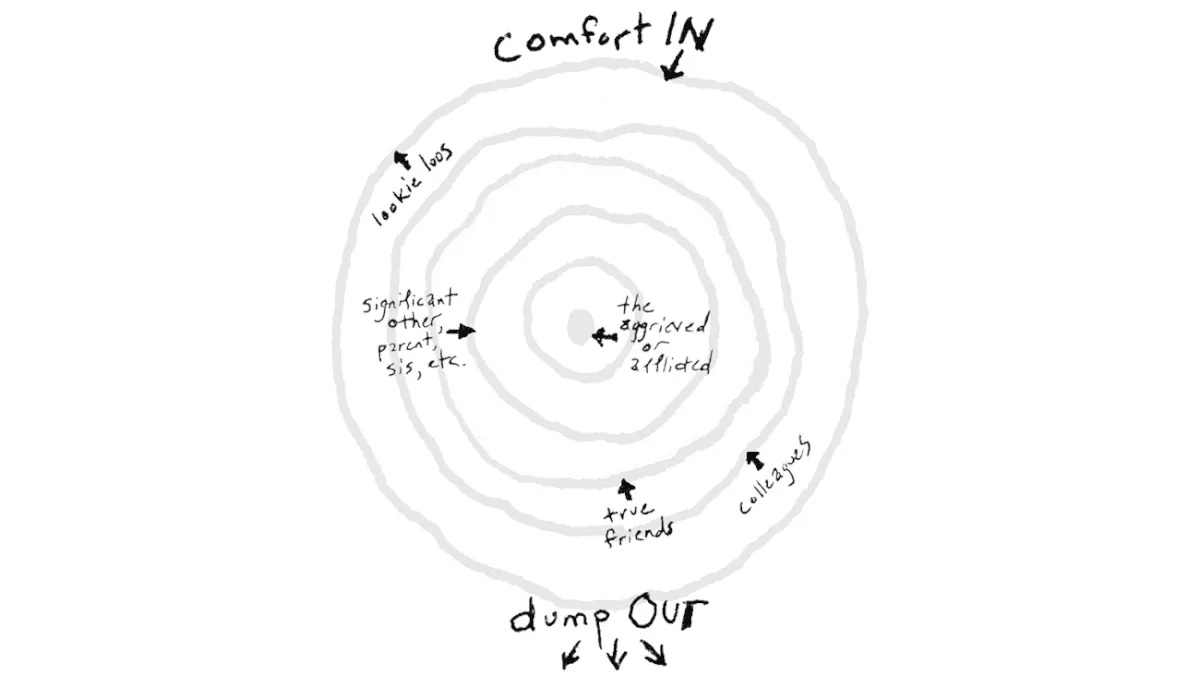LEARN SOMETHING NEW
Therapy Blog for Orem, Spanish Fork & South Jordan
Counseling Skills: How to Talk to Someone in a Crisis
Offering Support When Things Go Wrong
Since this is a counseling blog, chances are you are reading this because you or someone you know is going through something hard. If you are close to someone who is in a crisis, you might not know what to say. How do you offer your support? What can you say to help them feel better? (Related article: Learn How to Cope).
You don’t have to struggle to know what to say or how to respond to someone in a crisis. Today, you will learn about grief, effective communication in a crisis, and how not to say the wrong thing. 
Counseling Skills Tip: How Not to Say the Wrong Thing
As you watch your loved one go through a difficult time, you might think you are powerless to help. Maybe you think you will just make things harder. Or, even worse, you recall a time when, in your own crisis, someone said something hurtful or frustrating when all you wanted was support (Related Article: 3 Principles of Emotional Health).
So, what can you do? Clinical psychologist Susan Silk taught a practical way to understand the impact of a crisis on the people around you (Source: How Not to Say The Wrong Thing by Susan Silk). You can use this idea to know how to say the right thing to a struggling friend.
Kvetching Order
To kvetch means to complain. Creating a “kvetching order” helps you understand good communication boundaries for you and your loved one in a crisis. To start, you will draw a circle, and write the name of the person at the center of the traumatic event. For example, let’s say your friend Jane suddenly receives devastating news; she has cancer. Thankfully, it can be treated, but it will be a long, challenging road for her and her family. The first circle will have Jane’s name. She is the one who is personally experiencing the trauma of cancer first-hand. 
Next, you will draw a circle around the center. This circle will include the people closest to Jane. For instance, this circle would include Jane’s spouse and children, who live in her home and who will also be directly impacted by the crisis.
You will continue this process, drawing rings and writing the next-closest people to the trauma in each circle, as many times as you may need. You will notice that you will eventually write your own name in one of the circles. The further a name is from the center, the further removed the person is from the crisis itself. (Related article: The Empathetic Partner).
Comfort In, Dump Out
Now that you have a “kvetching order” for your situation with Jane and her cancer diagnosis, you can use this as a map to navigate communication. The main rule of this model is that you “comfort in, and dump out”.
For example, Jane is the one who is personally experiencing cancer. So, since she is in the middle, she can fully express her feelings about the cancer to anyone in the outer rings. She can cry, yell, complain, gripe, and say “this is so unfair”, and “I am not ready for this”. She can “dump out” to the outer rings of the kvetching order, and will not invalidate the experience of the people in the outer rings. (Related article: What is Empathy?).
Now, how can you respond when Jane expresses her frustration? Look where you are located in the order. In this example, Jane is in the middle, her husband and kids are in the next circle. Her mom and sister who live nearby are next. Then, you and other close friends are after that. The “dump out” principle still applies. There are rings after you and other friends with people like co-workers, kids’ friends, neighbors, etc. Since you can “dump out”, you are able to appropriately complain to the people in the rings outside of yours.
Let’s say you run into a co-worker of Jane’s at the store one day. She recognizes you and offers her condolences for your friend, and she asks how you are doing. (Related article: Resilience). You can respond “yeah, I hate this! It is so unfair. I miss the days before she got sick.” without creating emotional harm to her coworker, who is not as close to the crisis.
And, in return, the co-worker can “comfort out”. Since you are closer to the crisis, she can provide support by comforting you. Maybe she says “This must be so hard for you. I am so sorry. I can’t even imagine”. Now she has offered comfort and validation, and has helped you to feel seen and heard in your time of need.
Adversely, it wouldn’t make sense for her to “dump in” to you. You are talking about a close friend who you may have known for much longer. It may be hurtful and unhelpful for her to respond to your “dumping out” by “dumping in” in return. That would sound something like “yeah, this really sucks for me too, all of this commotion about Jane’s diagnosis is really wearing me out”. See the problem? If she responds to you as if you were in the same “ring”, her comments might seem invalidating and hurtful to you, who is much closer to Jane (Related article: Depression Counseling). 
Listen and Comfort
The closer you are to the middle of the kvetching order, the more you will seek support and comfort. And, if you are interacting with someone in a closer ring, your job is to comfort and listen. After all, if you are closer to the center, you are actually closer to the crisis itself. You may even be confronting it on a daily basis. In the original article about the kvetching order, Silk simply said “ Listening is often more helpful than talking. But if you’re going to open your mouth, ask yourself if what you are about to say is likely to provide comfort and support. If it isn’t, don’t say it”. Understanding these boundaries can help empower you to say the right thing and offer true support and love for those in a crisis. (Related article: How to Communicate Better Through Boundaries).
Empathy is the Key
You will find that the idea of a kvetching order works in many different situations, and can even be applied to more minor crises that you will run across in your daily life. Above all, the key to understanding what to say is empathy for others. John Gottman taught that the best thing you can do for someone in need is to listen and care. He goes on to explain that, in a crisis, people typically don’t want advice, they just want to feel loved (Source). Offering a little validation in a challenging time can go a long way.
If you or someone you are close to is struggling, you don’t have to go it alone. You can also find support, advice, and guidance in counseling with our trained and compassionate therapists. (Related article: Counseling Do’s and Don’ts). Counseling can help you practice effective communication skills for many different situations. Ready to find help? Schedule a counseling appointment with us today in Orem, South Jordan, or Spanish Fork.
Written by Lauren Adkins
